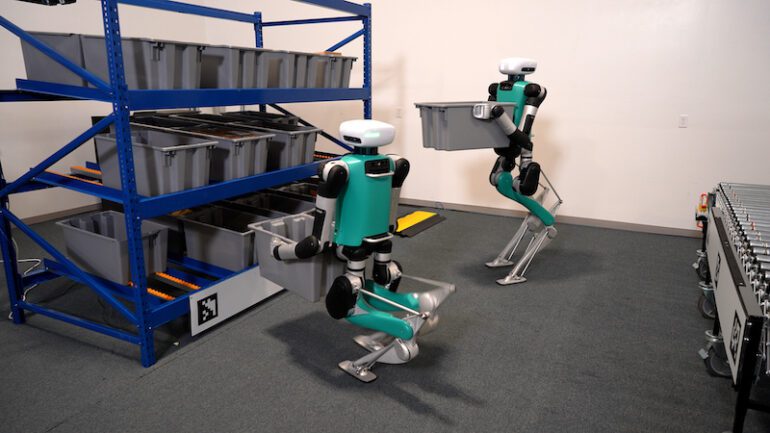- Agility Robotics downsizes its workforce to prioritize commercialization efforts.
- Strategic realignment aims to streamline operations for enhanced market penetration.
- The company maintains a focus on scaling the production of its flagship bipedal robot, Digit.
- Significant investments from industry giants like Amazon underscore market potential.
- Talent influx, including notable appointments, signals a commitment to innovation.
- Current job openings emphasize emphasis on engineering and manufacturing roles.
Main AI News:
Agility Robotics, a leading Oregon-based firm, has recently undertaken a strategic realignment by reducing its workforce. This decision, though affecting only a “small number” of employees, reflects the company’s commitment to intensify its efforts towards commercialization.
In a statement to TechCrunch, Agility stated, “As part of Agility’s ongoing efforts to structure the company for success, we have parted ways with a small number of employees that were not central to core product development and commercialization.” This move aligns with Agility’s overarching objective of catering to the burgeoning demand for bipedal robots in industrial sectors. The firm’s primary focus remains on scaling up the production of its flagship product, Digit, while concurrently expanding its clientele base globally.
Agility Robotics has been at the forefront of revolutionizing industrial automation with its bipedal robot, Digit, which originated from research at Oregon State University. Despite facing shifts in priorities, particularly towards warehouse automation, Agility remains dedicated to advancing its technological prowess in the realm of humanoid robotics.
The company’s journey has been fueled by substantial investments, with notable backing from industry giants like Amazon. Two years ago, Agility secured a significant $150 million Series B funding round, with Amazon’s Industrial Innovation Fund among the key investors. Despite the conclusion of pilot programs with Amazon, the collaboration signifies a significant milestone in Agility’s trajectory.
In parallel, Agility Robotics has witnessed a wave of talent influx, with notable appointments including Peggy Johnson, former CEO of Magic Leap, assuming the role of chief executive. This strategic recruitment drive underscores Agility’s commitment to fostering innovation and expertise within its leadership ranks.
Looking ahead, Agility Robotics aims to capitalize on its momentum by strategically expanding its workforce. The company’s current job openings predominantly revolve around engineering and manufacturing roles, reflecting its steadfast commitment to driving technological innovation and market penetration.
As Agility Robotics navigates the dynamic landscape of industrial automation, its steadfast focus on commercialization and productization underscores its resilience and vision for the future.
Conclusion:
Agility Robotics’ strategic realignment towards commercialization signifies a pivotal shift in the market landscape for industrial automation. By streamlining operations and prioritizing core product development, the company aims to capitalize on the burgeoning demand for bipedal robots. Collaborations with industry giants and strategic executive appointments underscore Agility’s position as a key player in shaping the future of industrial robotics. This move not only enhances Agility’s competitive edge but also reflects broader market trends towards innovation-driven solutions in the industrial automation sector.

